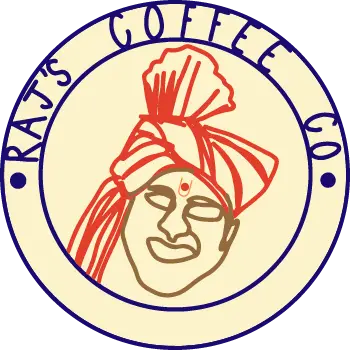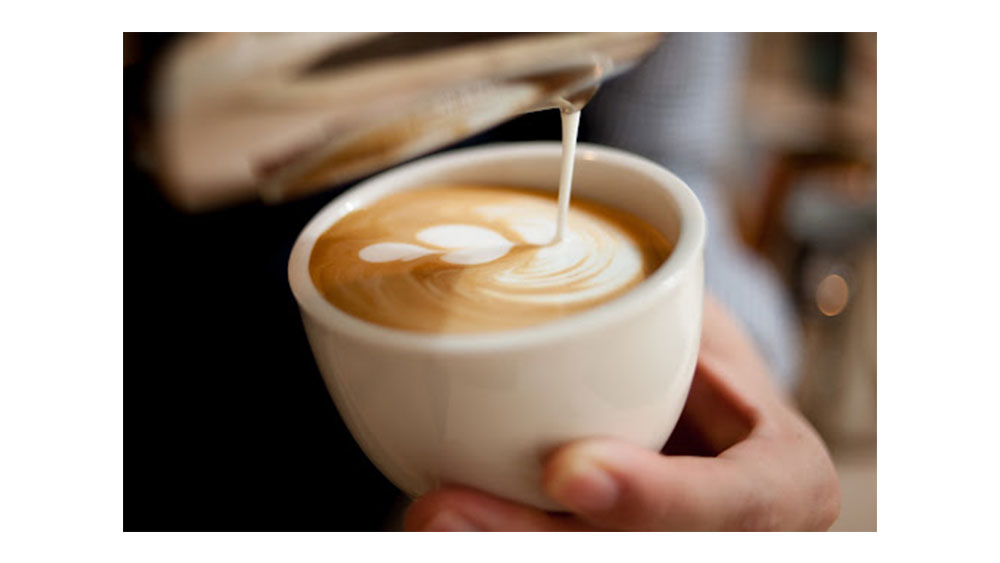Lattes have long been one of the world’s favorite coffee drinks. They’re rich, sweet, velvety, and wonderfully moreish. From the classic, basic latte to different variations such as the PSL or the frappuccino, it is a popular and commonly drunk thing, with latte history being complex and storied.
In this article, we’re going to talk about latte history, and speak on what makes a latte a latte. We’ll be taking a tour through a few different European countries, with a few quick stops in the USA.

What is a latte?
At the most basic level, we all know that there’s a commonly drunk form of the latte that’s especially popular in the modern day. This drink can be purchased at any number of different coffee shops around the world, from chain stores to independent spots.
A latte, at the most basic level, is an espresso that’s been topped with steamed milk. This combination is something quite elegant since the milk is steamed in such a way that the texture of the drink is almost totally transformed. An espresso is a short, hot thing with very little fat in it. The combination of the fat content of milk and the microbubbles formed during steaming leads the latte to be a smooth, creamy drink that some people might consider almost dessert-like.
The latte is commonly seen as something of a base for a range of different modern coffee drinks. By this, we mean that drinks like the mocha or matcha latte are typically regular lattes with one or two ingredients changed. A mocha, for example, is made with hot cocoa instead of steamed milk. On the other hand, a matcha latte is made with a shot of strong matcha tea, instead of a shot of espresso. The tea gives the drink a strong green color, as you can see below.

What’s the story of latte history?
The latte itself has a complicated history, since the word ‘latte’ simply means ‘milk’, in Italian. This means that knowing where to track down a latte in a history book can get complex, thanks to the fact that the term can be confused very easily.
European cuisine has long mixed coffee and milk, creating a creamier version of simply brewed coffee. This has a long and storied history, and according to the Oxford English Dictionary, the term ‘caffe e latte’ was first used by William Dean Howells to mean a cup of coffee containing milk. In his essay ‘Italian Journeys’, he mentioned that ‘breakfast drinks of this kind have existed in Europe for generations, but the [commercial] version of this drink is an American invention.’
The version of the latte that we’re familiar with features steamed milk, while a more traditional Italian version typically would not. This is because an Italian version would typically feature Moka pot-style coffee poured into heated milk, and not frothed. An American version would typically contain steamed milk, though we’ll get into the specifics of its invention in a few moments.
How has it changed over time?
In making his statement on the commercial nature of the latte, Howells truly hit the nail on the head. It is typically considered that milk was first added to coffee on rare occasions to suit different people’s palates throughout Europe. This was when coffee was simply steeped, and espresso-style brewing was much rarer.
After espresso brewing became more common, people were happy to drink that type of coffee throughout Europe. However, for the American palette, cafe owners would add steamed milk to make the flavor much more neutral and creamy.
While there is some debate on how true this may or may not be, the Caffe Mediterraneum in Berkeley, California claims that one of its owners invented the concept of a latte made in the American style, thereby making the latte itself something of a cafe standard.
What is known, however, is that the latte itself was generally popularized in Seattle, Washington during the early 1980s. In the early 1990s, this method of preparing coffee drinks spread throughout the US, and then around the world.
Within latte history, are there regional variations?
Yes, there are regional variations. The primary difference is between the Italian latte and the American latte.
An Italian latte typically consists of heated milk, which hasn’t been steamed or otherwise frothed, standing in a mug. Then, coffee is brewed to high strength with a Moka pot, before being poured into the mug of heated milk.
This method of combination results in a well-mixed drink that is simple, and typically only served at breakfast. The drink in the cup is a milky coffee drink, of course, to which sugar is rarely if ever added.
A latte from the US is typically prepared a little differently. Espresso will be poured into a larger cup than an Italian latte would be served in, before steamed milk, replete with microbubbles to create a thick, creamy texture, will be poured on top of that. The foam may then be poured in specific ways to create art on the surface of the drink.
This method of preparation results in a rich, creamy drink that is typically sweetened or otherwise altered with syrups and sugar. This differs from the Italian style in the fact that the drink is much milder in flavor, typically, typically being flavored more with milk than coffee.
The final main variation that comes to mind is the iced latte. This isn’t a universal thing, but rather a twist on the American style of preparation. Espresso and chilled milk are poured over ice, leading to a milky, coffee-flavored drink that is served ice cold.
This drink, interestingly, is similar to the Italian latte in one way: the milk isn’t frothed or steamed. However, it’s also vastly different in another way: iced lattes very commonly include sugar or syrups. This is typically done to give the drink a unique and tasty flavor, with the most famous example likely being Starbucks’ Pumpkin Spiced Latte, which is flavored with traditional US baking spices, such as cloves and cinnamon.

Conclusion
The latte is an exceptionally popular drink, and we’re sure that it isn’t going anywhere any time soon. We hope that you’ve enjoyed this dive into the history of the iconic drink!

